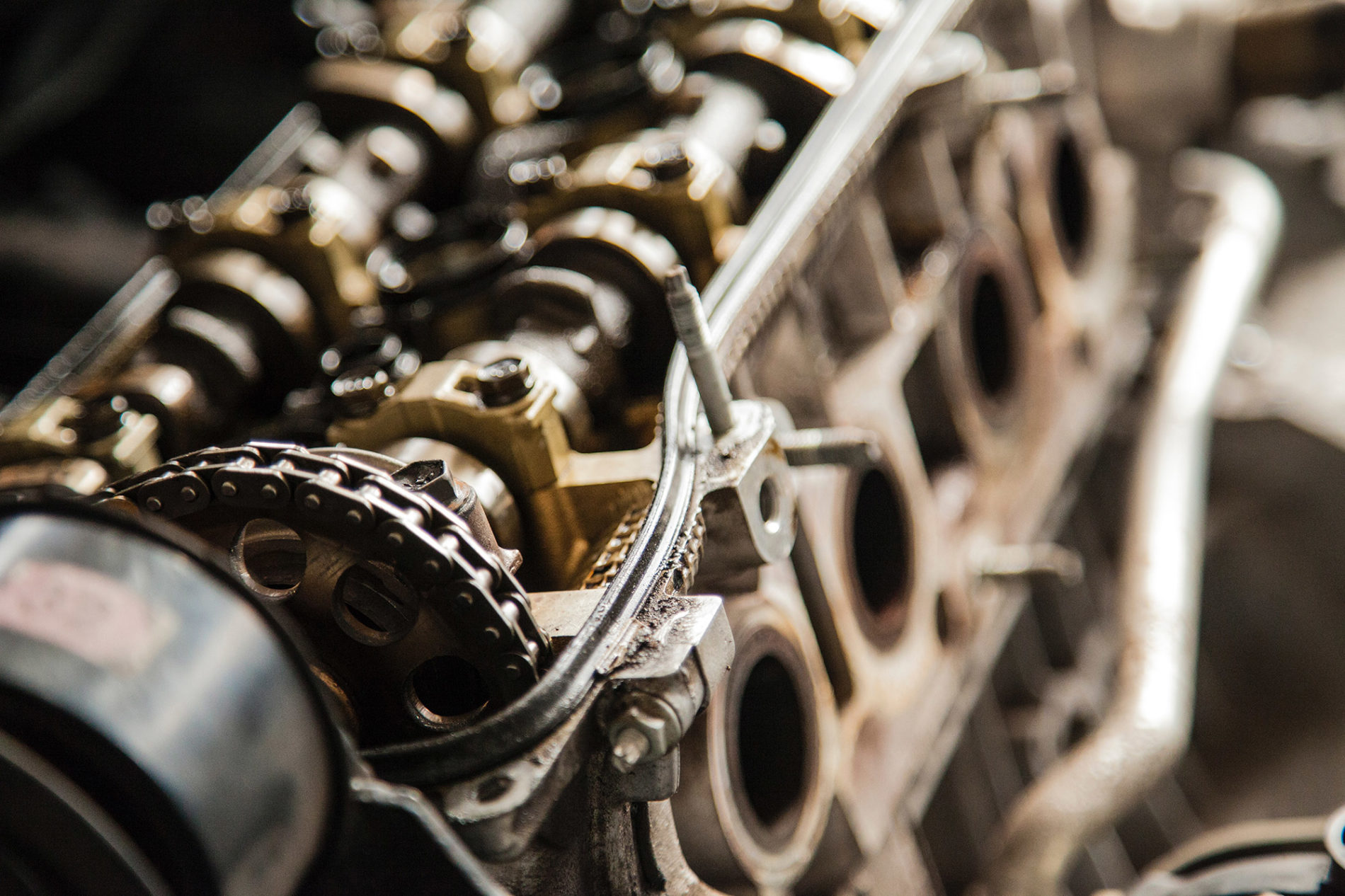Advancing the OP engine on three fronts
Yes. We’re focused on three major projects, with OP engines ranging from 270 hp (200 kW), aimed at pickup trucks, to over 1,000 hp (746 kW) for military vehicle applications. Currently our big project, the Advanced Combat Engine (ACE), is with the U.S. Army and Cummins Engine. We’ve been working on it for several years and now have engines under test at Cummins, and with the Army’s Ground Vehicle Systems Center (GVSC) in Warren, Michigan, as well as here at Achates. This engine is proof of the capability of Achates’ technology.
A 1,000-hp variant of the ACE is installed in a Bradley Fighting Vehicle and has undergone dyno testing. Driving tests begin in 2021 and the engine in this power rating is planned for series production in 2024. The Army is also planning 750-hp [559-kW] and 1,500-hp (1,120-kW) variants.
And we have a new contract to work on a family of smaller engines for the Army’s tactical vehicles and cargo trucks. The Army is really focused on getting the engine into vehicles because the Achates opposed-piston engine doubles the power density compared with existing diesels. We cut the volume of the engine and cooling system in half. The engine enables faster, more fuel-efficient vehicles with longer range. It helps their ability to engage and evade the enemy.
Would Cummins be the manufacturer?
That’s up to the Army to decide. Our business model is not to manufacture engines. It’s to work with established engine companies and license our technology to them. That’s exactly what we’re doing with the ACE project with Cummins. Achates is doing design and development for the family of smaller-displacement engines for tactical vehicles, rated from 300 hp to 500 hp [223 to 373 kW], ourselves. We expect Cummins or another engine OEM will come aboard on that one.
Achates also has a program with CARB?
That’s right, it’s largely funded by California’s Air Resources Board. This is the Heavy-Duty Diesel and it’s the next one most likely to go into production. We’re partnering with Aramco on this project. It’s a 10.6-L, 400-hp [298-kW] diesel designed to replace a 13-L truck engine. In August 2020, the state enacted legislation requiring truck engines to reduce their NOx by 90 percent. That’s a huge leap, and difficult to achieve. The Engine Manufacturers’ Association stated that it would cause the cost of a diesel truck to increase by $58,000.
But we’ve met the 90 percent target using an off-the-shelf aftertreatment system. We started out with a close-coupled SCR [urea injection] and kept working on combustion-side improvements to the point where we didn’t need that type of SCR. The second ARB project goal is lower CO2, to meet the EPA’s Greenhouse Gas-II regulation for trucks. That one requires steady reduction of CO2 by 2027. Well, we’re already 4% below the 2027 standard.
What’s the status of the OP engine for pickups?
That’s our third big project: the 2.7-L, 3-cylinder opposed-piston truck engine that’s funded by the Department of Energy’s ARPA-E [https://www.sae.org/publications/magazines/content/17autp02/]. We finished the first stage of that project, running gasoline compression-ignition. It’s installed in a Ford F-150. At the moment it’s about 10 percent more efficient, on a drive-cycle basis, than Ford’s most efficient engine in the F-150.
Gasoline is hard to combust at low temperatures, but the OP engine can run compression-ignition with gasoline without any additional heat source. We can control the degree of cylinder scavenging; at low loads we keep most of the exhaust gas in cylinder. This has a double benefit: it keeps the trapped gas hot for stable combustion, with inherent NOx mitigation because we have internal EGR. So, the OP is the perfect architecture for low-reactivity fuels as we look to co-optimize engine and fuel with Aramco.
We received a follow-on grant in late 2019 to continue the program. So, we brought in Ricardo as the prime subcontractor. That follow-up program has two goals. The first goal is to further improve the efficiency. We think we can get to a 20 percent advantage over any other production gasoline engine used in light trucks. The second goal is to significantly reduce the weight and cost of the engine. The prototype engine is fairly heavy. In this next phase we’re going to reduce weight significantly, to where it’s competitive with a light-truck diesel. Our aim for the second-generation 2.5-L is to deliver diesel-engine efficiency with gasoline fuel. Ricardo is a perfect partner. They’re world-class in engine design and expert at optimizing mass in every component.
Previously we talked about the potential for hybridizing the Achates engine.
Yes – it’s a great technology for both military and commercial applications. We have a project funded by ARPA-E, for a hybrid opposed-piston engine. We’re working with the University of Michigan on that project; they’re doing development and testing of one of our engines now. Anna Stefanopoulou [professor of mechanical engineering, William Clay Ford Professor of Technology, and SAE Fellow] is the project’s ‘guru’. Much of the work they’re doing, on controls, is headed by Heath Hofmann [professor, electrical engineering and computer science].
What’s your compressor strategy and hardware?
Up until the middle of 2020, all the prototype engines used a turbocharger, mostly off the shelf, and a supercharger primarily from Eaton, to do our boosting work. We’re a 2-stroke engine so we have no pumping loop in the combustion cycle. Our direction now is toward electrification – some type of e-turbo along with an EGR pump. Our new engines under test are employing some of those capabilities.
